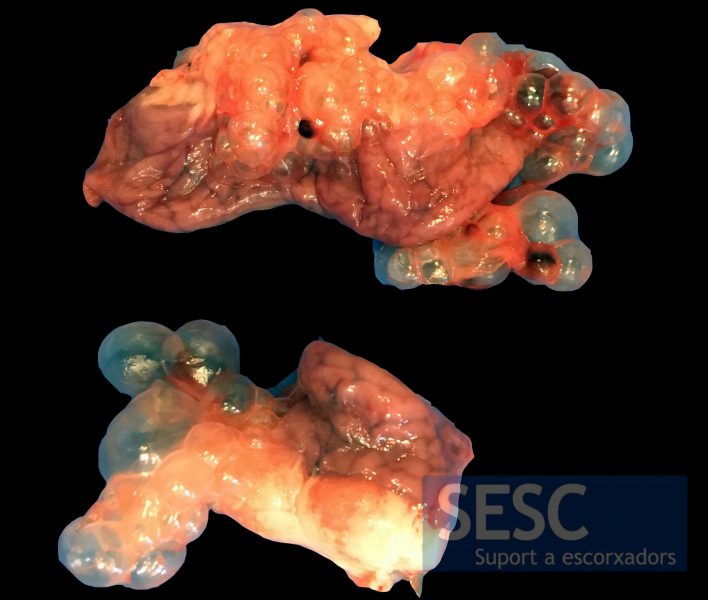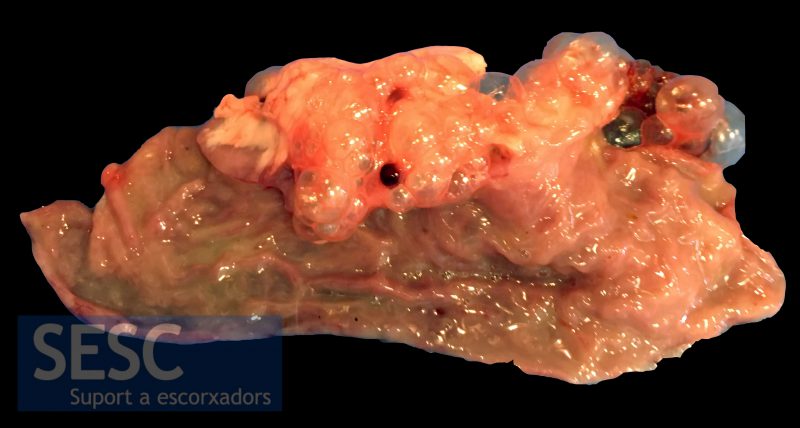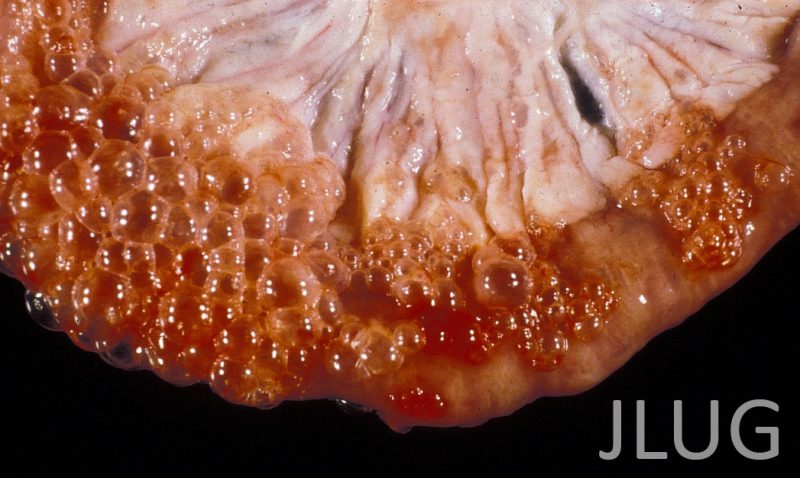Pneumatosis cystoides intestinalis
En una canal de cerda de 6 meses de raza híbrida se observaron múltiple vesículas llenas de aire en el mesenterio de varios fragmentos del intestino delgado y de los nódulos linfáticos mesentéricos.
Esta lesión se conoce como enfisema intestinal o Pneumatosis cystoides intestinalis. Es muy poco frecuente y se observa en cerdos detetados. Se caracteriza por la presencia de vasos linfáticos dilatados en la pared intestinal y el mesenterio debido a la presencia de gas. La causa es desconocida pero no se asocia a signos clínicos ni representa ningún riesgo para la salud pública.

Dos fragmentos de intestino delgado sin abrir con múltiples vesículas llenas de aire adheridas al mesenterio.

Un fragmento de intestino abierto. La mucosa no presenta alteraciones evidentes.

Imagen de archivo de un caso típico de enfisema intestinal.


4 comment(s)
Comment from Pork Industry group in LinkedIn by Eduardo J Kwiecien:
I have found few cases at slaughter pigs. It is a very rare condition that one can find at slaughterhouse. Until now, there’s not a causative agent to cause this condition. Some say that Clostridium species can be involved in the pathogenesis of the peumatosis, but there’s not any light about this. Is there anyone with enough courage to investigate the real cause?
Comment from Veterinary pathology group in LinkedIn by LuAnn mckinney:
Also known as «bubbly guts» (graphic, but descriptive…)
http://www.askjpc.org/vspo/show_page.php?id=133
Link to the Systemic Path Case from the Joint Pathology Center.
Comment from Veterinary pathology group in LinkedIn by Dinko Novosel:
Twice, I read one US paper, epi study, number of examen animals was huge…and as i remember lesion is related with trichuris infection…if i remember correct. All animals had trichuris infection background.
Dear All,
After the process of cleaning of the body/carcass, we think because of the too hot water and/or too hot gas-fire, in thin pigs we sometimes have found this condition.
Congratulation and Good luck, Laszlo